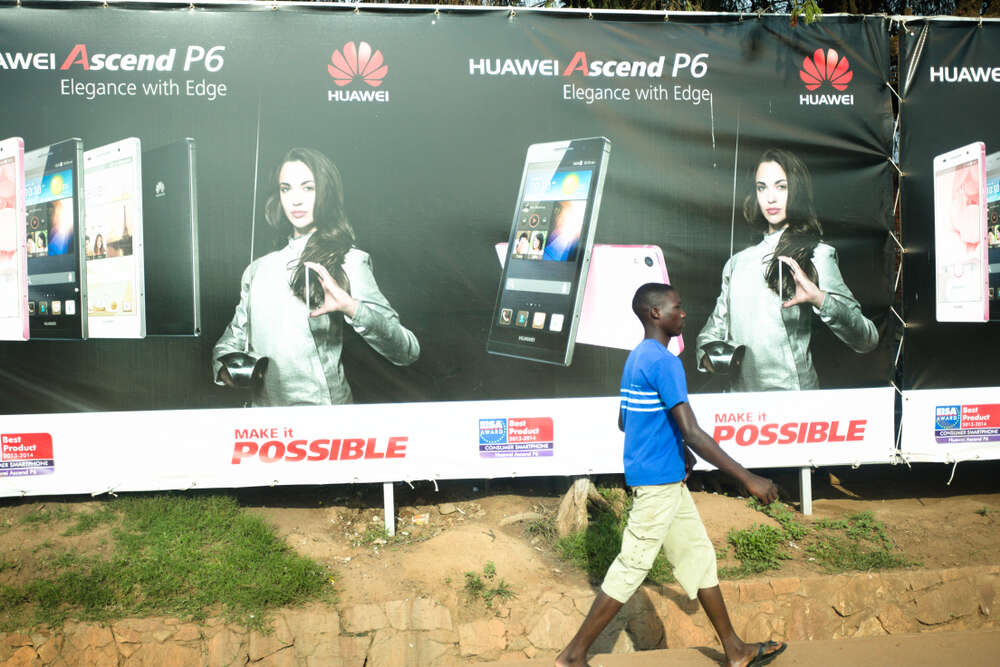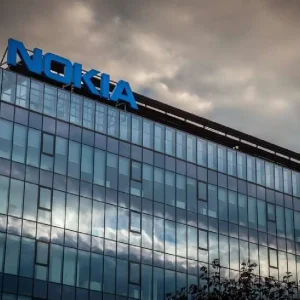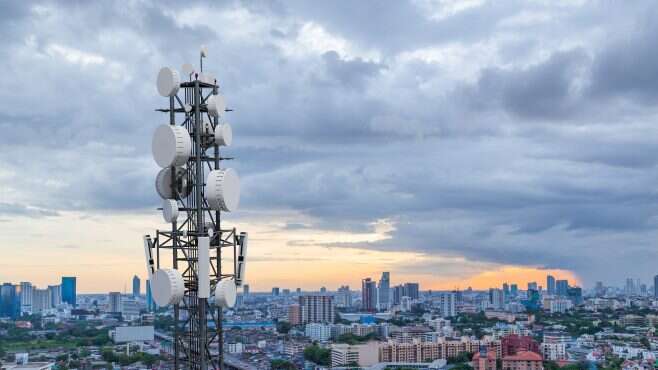
The logic behind the expansion of telecoms networks is cold and remorseless. Turning a profit from such networks requires the provider to find users, most of which reside in cities. These networks are at their most sophisticated in places where demand for complex services is at its highest: financial hubs, for example, like London and New York. Conversely, telecoms companies are reluctant to route fibre optic out into the sticks, where nobody lives and demand never rises beyond a local hunger for reliable broadband.
Unless that is, you’re Huawei. One of China’s largest telecoms companies, the firm made its name in the early 2000s as the provider that would venture deep into the countryside to hook up villages and towns with next-gen networking capabilities, usually at a lower price point than its nearest competitors. This was thanks, in large part, to generous subsidies from Chinese state banks, and applied to entire countries across the global south that were otherwise excluded from the mainstream of telecommunications: places like Uganda, for example, where Huawei has made major contributions toward building the country’s ICT infrastructure since 2006. Such efforts argue foreign policy experts, help to win over new backers for China’s campaign to reshape global digital governance norms as part of its Digital Silk Road project.
Huawei does not have as many friends in the West. After murmurs from US and UK intelligence agencies in the early 2010s that the company’s involvement in their networks constituted a cybersecurity risk – thanks in part to provisions in China’s National Intelligence Law, which compels tech companies to hand over any data to the state deemed relevant to national security – the telco became a victim of the growing rivalry between Washington and Beijing, with the former campaigning hard against Huawei’s involvement in upgrading Western networks to 5G. Most recently, that animus has extended to the UK ripping out much of the company’s kit from its 5G networks and the US banning the importation and sale of any equipment from Huawei.
Ironically, many of the cyber incidents involving Huawei products have taken place in the global south. That includes CCTV footage being syphoned from the African Union headquarters in Ethiopia, as well as accusations aired in the Wall Street Journal that the telco aided and abetted efforts by the Algerian, Zambian and Ugandan governments to spy on political dissidents. Huawei denied any involvement in these incidents, and its reputation in the global south remains stronger than ever, in part because many emerging markets see the company as an essential partner in spurring the development of their digital economies, and also because of a pervasive belief that they are just as vulnerable to spying from Western technology firms. That overlooks an essential difference between the two, argues Bryce C. Barros.
“Facebook is not acting 100% in accordance with the American government,” says Barros, China affairs analyst at the German Marshall Fund think tank. “They do have disagreements from time-to-time about things like privacy, data protection, content moderation. You won’t find that disagreement as much in places in the global south when you’re dealing with Chinese tech companies.”

Huawei’s global south ambitions
Founded in 1987 in an apartment in Shenzhen, Huawei initially struggled to make a name for itself in China’s nascent telecoms industry. “We didn’t receive a single penny from the government,” its founder, Ren Zhengfei, told the makers of a promotional film about his company’s early days – an allusion, perhaps, to the intense competition Huawei faced from the collection of state-backed firms which dominated Chinese telecoms at the time.
That changed in 2002. Realising that the company could not compete effectively against China’s telecoms giants for contracts in the country’s urban centres, Huawei pivoted abroad, marketing its expertise to emerging economies yet to be hooked up to efficient telecommunication networks. The firm’s success in these two spheres convinced the China Development Bank to extend it the first of many generous lines of credit. This was a turning point for Huawei, argues Henry Tugendhat, a senior policy analyst with the United States Institute for Peace.
“Despite its narrative and mythology of being the one, lone private sector actor, it did sort of come into the fold of getting a lot of state support like the state-owned enterprises before it,” says Tugendhat.
That focus on emerging markets led Huawei to Africa. Beginning with projects in Kenya in 1998, the firm quickly expanded across the continent over the following two decades. At a basic level, its construction of first 2G, then 3G and 4G networks across the continent has given it a technical and political advantage in nations throughout Africa and the global south, explains Elisabeth Braw, a resident fellow at the American Enterprise Institute. “Huawei can then sell the next generation to them,” says Braw, “even as Western companies start looking at 6G.”
Huawei’s success in Africa, says Tugendhat, is impressive – but should not be overstated. It’s impossible to verify, for example, the oft–cited claim that Huawei has built 70% of Africa’s 4G market (“It drives me crazy,” says Tugendhat). Western sanctions, meanwhile, have cratered its market share in handsets, and research from Tugendhat and other scholars suggests its claims of facilitating extensive knowledge transfers into African economies may be overstated.
One area where Huawei has clearly been successful, though, has been in managed services contracts. Riding a wave of privatisation across Africa in the early 2000s, the firm won contract after contract to effectively run large sections of national carrier networks. “It’s obviously an incredibly powerful position for a sales company to be in,” says Tugendhat, as it “then gives them a stronger position to sell [their] equipment.”
Cloud computing is also a huge potential growth area in Africa. While Huawei faces intense competition in this space across Western markets from AWS, Azure and Google Cloud, it has outpaced all of these companies in its provision of data centres for African governments. “It’s building a data centre for the Senegalese government, a data centre for a state-owned carrier in Zimbabwe,” says Tugendhat, and another one in Malawi, “also nominally to support government services.”
It’s unclear whether these are also managed service contracts. For his part, Tugendhat has been unable to confirm whether these data centres are air-gapped or manned by a dedicated team of Huawei technicians (the company did not reply to a request for comment on this point from Tech Monitor.) What is clear, though, is that Huawei is at the front of the queue in a marketplace with enormous growth potential. While the cloud market in Africa now is relatively small, the continent’s digital economy is predicted to be worth some $712bn by 2050 – a consequence, in part, of national governments’ focus on leveraging growth in the digital economy to accelerate economic development more broadly.
Similar priorities are also in evidence in Indonesia, where the government has courted both US and Chinese tech companies to invest in the country’s digital services. It’s an environment that has led Huawei to become one of the most popular Chinese companies in Indonesia. This positive reception, says Gatra Priyandita, an analyst at the Australian Strategic Policy Institute, is partly attributable to the firm’s employment of a majority-Indonesian workforce and generally lower price point compared to other telecom providers (30% lower, on average.) But it’s also to do with the fact that the firm has played an outsized role in knitting Indonesia’s many thousands of islands together into a single, coherent telecommunications network.
“Establishing and sustaining telecom networks across the world’s biggest archipelago is simply too expensive and complex to be conducted alone,” says Priyandita. “As such, foreign firms – regardless of where they come from – have emerged as necessary partners in this pursuit.”

Western competition issues
It also hasn’t hurt that Huawei has invested heavily in IT capacity building across Indonesia. That extends throughout both the private and public sectors, with Huawei offering free training courses to civil servants up and down the archipelago. “We do know that many other firms – from Microsoft to Cisco – provide training to Indonesian officials as well, including those in key government agencies that deal with cybersecurity like BSSN,” says Priyandita. “Having said that, I’m not aware of any other company that trains officials at the scale that Huawei has provided” – up to 7,000 since 2019, according to one Huawei report, drawing similar contributions from Western companies.
That capacity-building effort also extends to device donations. In April, Huawei was lauded by community leaders in West Papua for donating tablet computers to local primary schools. Similar gifts have been made elsewhere in the global south, including an entire ICT lab for a Tanzanian university and 300 tablets to a higher education institution in Jamaica. Intended as goodwill gestures, the extent to which Huawei’s device portfolio constitutes a cybersecurity risk is vigorously debated. At a basic level, says Priyandita, Huawei remains a risk thanks to China’s National Intelligence Law. However, Washington is unlikely to convince Jakarta of the need to blacklist the company. “Few Southeast Asian countries responded positively to the Trump administration’s call to ban Huawei technology from their network systems,” says Priyandita.
If they’re really serious about blunting Huawei’s expansion in the global south, he adds, then liberal democracies should focus on matching the company’s efforts in IT capacity building. Barros agrees. Too many Western telecoms and technology firms, he argues, remain reluctant to expand into Africa and the Asia-Pacific region, either because they think these markets lack potential or because they fear the impact political instability might have on their operations. So far, Barros hasn’t been impressed by US efforts to ramp up its IT capacity-building efforts in the global south either.
“There are initiatives that the US government and some of the other allied developed democracies have talked about, like ‘Build Back Better World,’” he says. Even so, he adds, “I’m still waiting to see a little bit more information about how they’re going to operationalise that.”
It’s highly unlikely, though, that such efforts would see Huawei’s progress halted in the global south. Indeed, the company’s reputation in Africa and the Asia-Pacific region, notwithstanding US regional allies like Japan and Chinese geopolitical rivals like India, is stronger than ever. It’s even found a common cause with democracies like Nigeria and Indonesia in its promotion of more centralised modes of internet governance. It’s hard to tell whether this alignment has arisen as a result of lobbying from Chinese tech companies like Huawei, or simply because it gels with pre-existing conceptions of internet governance among select nations in the global south. In the case of Indonesia, Priyandita believes it’s the latter.
“My sense is that [its] cyber governance preferences are organic, as it relates to [a] deep sense of insecurity among officials about the potential use of cyberspace as a platform to undermine the digital economy and spread information,” says Priyandita. Viewed that way, adds Priyandita, “China’s own approach to cyber governance and its (mostly) successful attempts to control content may serve as inspiration.”
In the meantime, Huawei continues to make inroads throughout the global south, from building 161 new mobile communication masts in the Solomon Islands to installing 5G systems in mineshafts deep beneath South Africa and Laos. Inaction by the US and its allies in pushing for alternatives to the company, argues Barros, will see Western influence in emerging markets diminish and, more importantly, deprive governments and consumers in these markets of choice when it comes to building and upgrading network infrastructure: “I think it’s important to at least demonstrate to places in the global south that the United States still cares, is still trying, to engage with them on their own terms.”






